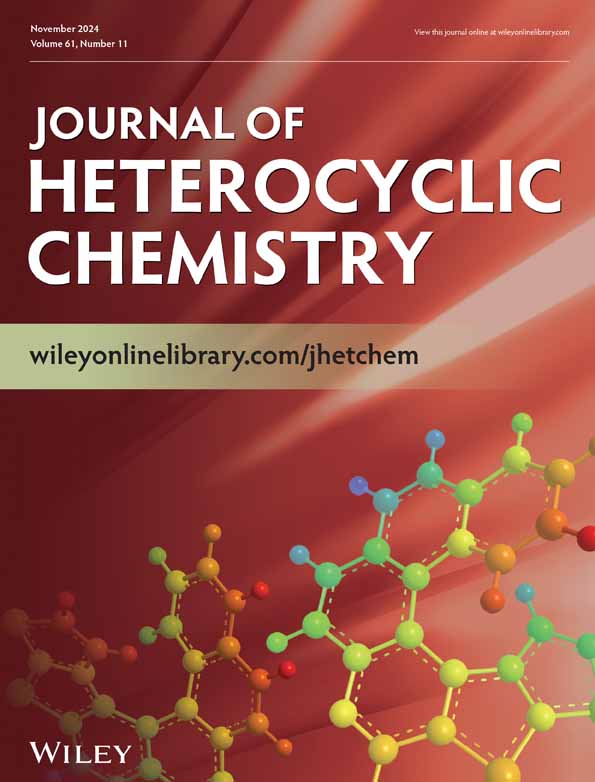Thermal [2+2] Cycloaddition of Dihydropyrroles and Dimethyl Acetylenedicarboxylate
IF 2
3区 化学
Q2 CHEMISTRY, ORGANIC
引用次数: 0
Abstract
N-Tosyl protected 2-azabicyclo[3.2.0]hept-3-ene was synthesized from ε-caprolactam in seven steps. Thermal [2+2] cycloaddition reaction between the synthesized cyclobutane-fused dihydropyrrole and dimethyl acetylenedicarboxylate resulted in the formation of a 6-azatricyclo[5.2.0.02,5]nonane derivative, rather than proceeding via the electrocyclic ring-cleavage of the dihydropyrrole followed by a 1,3-dipolar cycloaddition.
二氢吡咯和二甲基乙酰二羧酸盐的热[2+2]环加成反应
以ε-己内酰胺为原料,经7步合成了N-Tosyl保护的2-氮杂环[3.2.0]庚-3-烯。合成的环丁烷-融合的二氢吡咯和二甲基乙酰二羧酸酯之间的热[2+2]环加成反应产生了6-氮杂环[5.2.0.02,5]壬烷衍生物,而不是通过电环切割二氢吡咯然后进行1,3-偶极环加成。
本文章由计算机程序翻译,如有差异,请以英文原文为准。
求助全文
约1分钟内获得全文
求助全文
来源期刊
CiteScore
5.20
自引率
4.20%
发文量
177
审稿时长
3.9 months
期刊介绍:
The Journal of Heterocyclic Chemistry is interested in publishing research on all aspects of heterocyclic chemistry, especially development and application of efficient synthetic methodologies and strategies for the synthesis of various heterocyclic compounds. In addition, Journal of Heterocyclic Chemistry promotes research in other areas that contribute to heterocyclic synthesis/application, such as synthesis design, reaction techniques, flow chemistry and continuous processing, multiphase catalysis, green chemistry, catalyst immobilization and recycling.

 求助内容:
求助内容: 应助结果提醒方式:
应助结果提醒方式:


